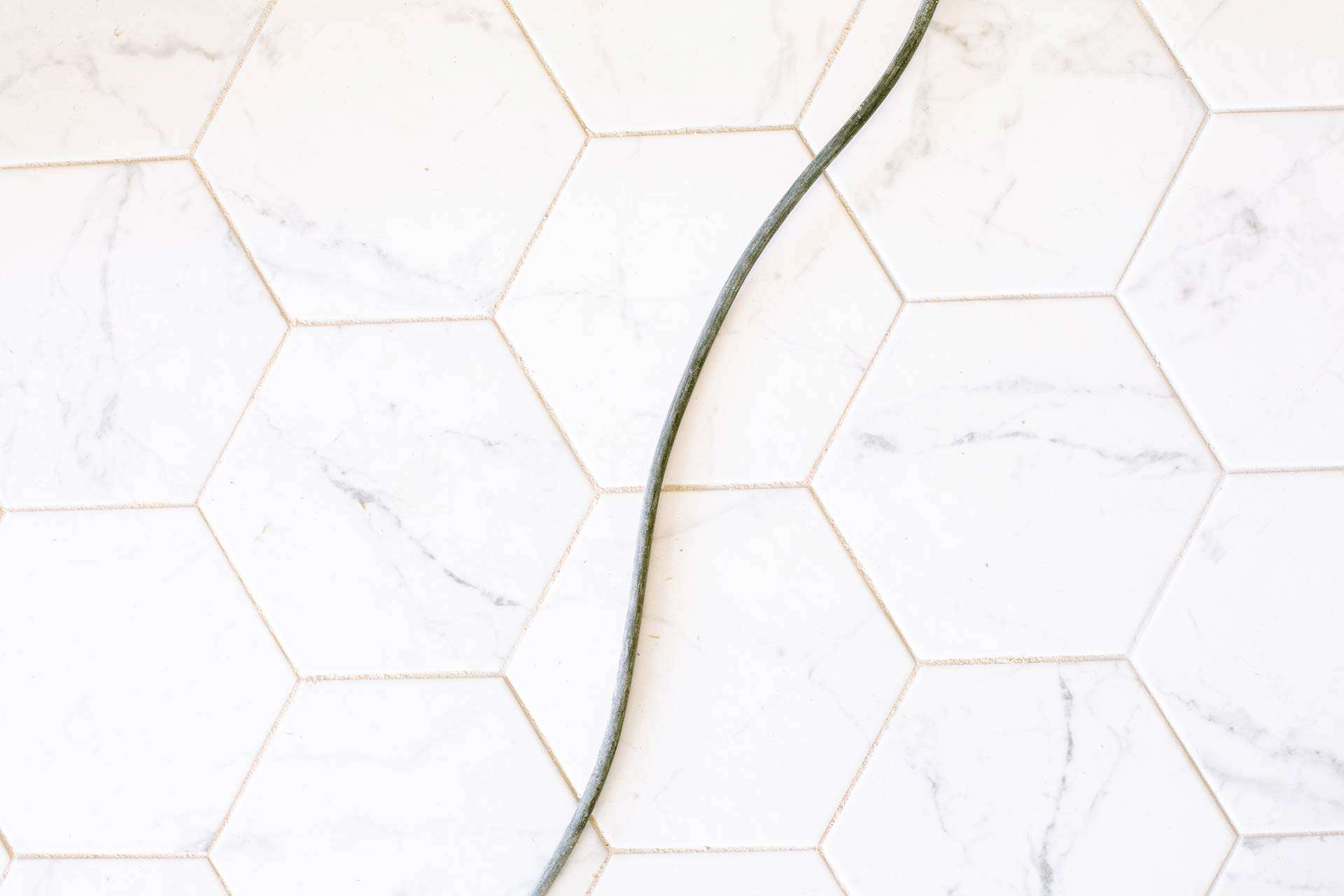If you’re wondering how to clean grout from your tiles in a natural, simple and easy way – you’ve come to the right place.
Cleaning tile grout doesn’t need to include the use of harsh chemicals or require an investment in specialist equipment. In fact, both of those suggestions are at best a waste of time and money and at worst damaging for your tiles.
Nevertheless, tile grout is something that does need cleaning. That’s why we’re going to explore some natural and gentle ways in which you can preserve the natural beauty of your stone tiles with natural grout cleaner materials and methods.
Cleaning Tile Grout
Grout is the dense fluid that is used to fill the gaps between the stone tiles on the floor and walls of your home. In addition to providing the necessary adhesive strength to keep your tiles in place, grout also contributes to the visual appeal of your floor or walls.
That’s why keeping your tile grout cleaned and sparkling is important. Dirty grout left to accumulate over time can detract from the aesthetic of your space and the visual appeal of your home.
When Do You Need a Tile Grout Cleaner
In most applications the grout used in tiles is light in colour and porous in material. There are good reasons for this. Dark grout can crowd out the beauty of your stone tiles and non-porous grout may not be as pliable in application.
But there is a down side as well: It makes it more prone to staining. When we say staining we’re not just talking about spills by the way. Dirt, debris, mould and soap can all build up between stone tiles and discoulour them quite visibly over time.
When you notice the grout starting to get darker and, to be honest, uglier it might be time to learn how to clean your grout.
How to Clean Grout Naturally
Cleaning grout doesn’t have to be overly expensive, time consuming or energy consuming. In fact, there are natural ways to clean your tile grout with basic household cleaning materials and some simple instructions.
Basic Tile Grout Cleaning guide
Step 1 – Water
Grab a cup or a bucket and make sure that it is clean. Then fill it up with lukewarm water – cold water won’t be as effective and hot water can be damaging.
Step 2 – Baking Soda
Add enough baking soda to make the water thicker in consistency but not enough that it becomes gluggy or ruins its viscosity.
Step 3 – Dish Soap
Add a small amount of natural dishwashing soap. Any natural soap will do as long as it does not have a high acidity level.
Step 4 – Mix
This one is self explanatory really. Just mix the above concoction until the ingredients blend.
Some people like to add a small amount of vinegar when cleaning grout between non-natural stone tiles. We strongly recommend you seek advice from your stone manufacturer or supplier before applying vinegar and avoid vinegar for natural stone grout.
Step 5 – Apply
Apply the water-baking soda-soap mixture to the grout. There’s no need to soak the groat but ensure that the stained, dirty sections of the grout are all subjected to the mix.
We recommend using a spray bottle to gently apply the warm water and soap to the tile’s grout.
Step 6 – Scrub
When we say scrub, we actually mean to gently scrub. You don’t want to scrape away or degrade the grout in your efforts to clean it.
Pro tip: Scrub the grout in as circular a motion as possible. Scrubbing back and forth or up and down can damage the grout.
Step 7 – Rest
Let your grout and mixture sit still for a few minutes and take the opportunity to rest yourself.
Step 8 – Check
Have a look at the grout. More stubborn and persistent stains and dirt might need another round of mixture and scrubbing.
Is the stain still there?
If the stain or dirt is proving tougher than anticipated, you may need to adjust your cleaning mixture. Adding some more natural, non-acidic soap may help. For non-natural stone, you may want to consider adding some more vinegar depending on the application.
Is the stain just not going away?
For deeply embedded stains, a more thorough approach may be needed.
Option 1
First and foremost, make sure to seek professional cleaning advice. Once you’ve got the a-OK from your supplier to use bleach, use a small amount of hydrogen peroxide in your warm water and baking soda mixture.
Option 2
Alternatively, and this requires a bit more time, skill and investment, you can carefully scrape off the top layer of your tile grout using a specialised grout knife tool.
You will need to then apply a grout sealer afterward to protect it from further dirt, staining and damage.
Step 9 – Wipe
Take a soft sponge and wipe the excess mixture from the grout and tiles.
Step 10 – Dry
Now, step back and let the tile grout dry completely.
Tips for Cleaning Grout
- Always let the floors and walls dry properly before assessing the grout.
- Clean your tiles regularly with non-damaging cleaners.
- Always vacuum your floors before mopping to prevent the dirt from soaking into the grout between tiles.
- Get your grout professionally sealed and resealed regularly.
- Avoid harsh chemicals, materials with high levels of acidity and abrasive substances.
- Do not use vinegar or bleach on natural tiles.
- Always patch test your cleaning solution in a small, inconspicuous area to ensure that it does not worsen the discolouration or damage.
- Avoid hard-bristled brushes, steel wool and other abrasive tools. Be careful not to scrub too hard!
Speak to the Natural Stone Experts Today
Here at Euro Marble, we’re not just passionate about sourcing the best quality, most visually dazzling natural stone slabs from around the world. We’re also experts in ongoing maintenance and cleaning of natural stone and tile grout.





